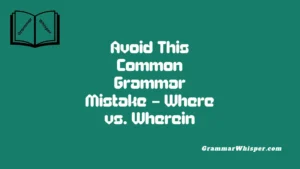Hyphenation is one of the more subtle yet critical aspects of writing in English. A simple hyphen – or the lack of one – can change the meaning of a word or even make it unclear. One such example is the debate over reevaluation or re-evaluation. Understanding when and why to use a hyphen with the prefix “re-” can greatly improve the clarity and professionalism of your writing. In this article, we’ll dive deep into the hyphenation rule, particularly focusing on “re-evaluation” and “reevaluation,” providing insights, examples, and best practices to help you navigate these small but important details.
Hyphenation plays a key role in making writing clear and easily understood. While many writers may overlook this small detail, incorrect hyphenation can lead to confusion, misunderstanding, or a loss of professionalism, especially in business, academic, or legal writing. For example, “re-evaluate” and “reevaluate” might seem interchangeable, but they aren’t always used in the same contexts.
When you understand the hyphenation rules of American English, you’ll be able to make more precise and effective word choices. In this post, we’ll focus on the prefix “re-” and whether words like “reevaluation” require a hyphen. We’ll look at different contexts, clarify common misunderstandings, and provide examples of proper usage.
Hyphenation in American English: An Overview
In American English, hyphenation rules can sometimes be confusing, especially when it comes to compound words or prefixes like “re-.” Though hyphens are often omitted in informal writing, formal and professional contexts demand greater attention to detail. Inconsistent or incorrect use of hyphens can detract from your credibility as a writer and make your writing harder to understand.
For example:
- “Re-enter” (with a hyphen) is generally used when referring to entering something again.
- “Revisit” (without a hyphen) is more commonly used when returning to a place or revisiting a topic.
The decision to hyphenate often depends on how the word is perceived and how its meaning might change in context.
The Prefix “Re-”: A Special Case for Hyphenation
The prefix “re-” is one of the most common prefixes in English. It’s used to indicate something is being done again or back. In terms of hyphenation, whether or not “re-” is followed by a hyphen largely depends on how the combination of prefix and root word affects the meaning of the word.
When to Use a Hyphen with “Re-”
Hyphens are typically used with “re-” when:
- The root word begins with the letter “e,” such as “re-enter” or “re-elect.” This is done to avoid confusion and to make the word easier to read.
- The meaning would be unclear without the hyphen, as with “re-cover” (to cover again) versus “recover” (to regain something).
These subtle distinctions make hyphenation crucial in preventing misinterpretation.
When to Avoid a Hyphen with “Re-”
On the other hand, you do not need a hyphen with “re-” when:
- The root word begins with a letter other than “e” and doesn’t cause ambiguity (e.g., “rework,” “reopen,” “revisit”).
- The prefix does not change the meaning of the root word. For example, “rethink” means “to think again” and does not require a hyphen.
The decision to use a hyphen often depends on clarity, pronunciation, and whether the prefix “re-” could potentially create confusion.
When to Use a Hyphen: The General Rule for Prefixes in English
In general, hyphenation rules for prefixes in English are quite straightforward. Here’s a quick guide to help with deciding when a hyphen is needed:
- Hyphenate if the prefix is followed by a word starting with a capital letter or if the combination could lead to confusion.
Do not hyphenate if the prefix is followed by a word starting with a vowel, except when the vowel is e.
Quick Guide to Common Prefixes:
| Prefix | Hyphenation Required? | Example | Reason |
| re- | Often yes | re-enter, re-evaluate | Prevents confusion with other words (e.g., re-entering a place). |
| pre- | No | preheat | No ambiguity when combined with “heat.” |
| un- | No | unmask | Simple combination, no confusion. |
| ex- | Often yes | ex-husband | Prevents confusion (e.g., ex and “husband” are distinct). |
As seen from the table, hyphenation isn’t always necessary. It’s a matter of clarity and avoiding confusion.
Reevaluation vs. Re-evaluation: A Common Question
One of the most common questions when it comes to the “re-” prefix is whether to use a hyphen in words like “reevaluation” versus “re-evaluation.” Let’s clarify this:
The Case for “Re-evaluation”
In the past, many style guides preferred to use the hyphen when writing “reevaluation,” resulting in the commonly seen form “re-evaluation.” This was especially the case in more formal or academic writing. The hyphen helped to maintain clarity and prevent any misreading of the word.
However, this is largely considered old-fashioned. In modern usage, “reevaluation” (without a hyphen) has become the preferred form in most contexts, including in academic and professional writing.
The Case for “Reevaluation”
The non-hyphenated form, “reevaluation,” has gained traction in recent decades, especially with the rise of digital communication and more relaxed language conventions. Many style guides, including The Chicago Manual of Style and APA, now favor the single-word form.
The key takeaway here is that both “reevaluation” and “re-evaluation” are technically correct, but the hyphen-free version has become the modern standard, particularly in business and academic contexts.
Which One is Right?
Ultimately, the decision to use a hyphen depends on your personal preference, your target audience, and the style guide you are following. If you’re unsure, it’s generally safer to go with “reevaluation” unless the context specifically calls for a hyphen.
The Role of Context in Hyphenation Choices
When deciding whether to use a hyphen with words like “reevaluation,” the context in which the word is used is important. Some situations demand a more formal style, where clarity and consistency are essential. In contrast, less formal writing, such as blogs or social media, often allows more flexibility in how words are written.
For example, in an academic paper, you might want to stick to “re-evaluation” to maintain formality. However, in business communications or casual writing, “reevaluation” without the hyphen would be perfectly acceptable.
Exceptions to the Rule: When Hyphenation with “Re-” Isn’t Necessary
As previously mentioned, not all words with the prefix “re-” need a hyphen. Here are some exceptions:
- “Rework” – In this case, the meaning of the word is straightforward and doesn’t require a hyphen.
- “Revisit” – There’s no ambiguity, so no hyphen is needed.
- “Reopen” – Again, the meaning is clear, and the hyphen would serve no purpose.
In all these examples, the absence of a hyphen doesn’t change the meaning of the word and contributes to a more streamlined, readable style.
The Impact of Omitting Hyphens: Misinterpretations and Ambiguities
Omitting a hyphen, or using it incorrectly, can create confusion. For example, without a hyphen, “cooperate” could be misread as “co-operate,” which could suggest a different meaning entirely. The correct use of hyphens ensures clarity and prevents any ambiguity in your writing.
Misinterpretations are more likely when you are writing important professional or legal documents. Consider the difference between:
- “Re-sign” (sign again) and “resign” (quit a position).
These small differences matter in professional writing, especially in contracts and legal documentation, where precise language is crucial.
Examples of Misinterpretation Due to Missing Hyphens
Misinterpretation in Legal Documents:
In a contract, the phrase “re-sign” can mean signing a document again, while “resign” means giving up a position. A missing hyphen could make these terms interchangeable, leading to potential misunderstandings in a legal context.
Misinterpretation in Academic Writing:
An article that refers to a “re-evaluation” might be perceived as an “evaluation again”, while a “reevaluation” refers to a fresh assessment of the situation. The hyphen makes a subtle but significant difference in academic or analytical writing.
Professional Writing: How Hyphenation Affects Clarity and Credibility
Proper hyphenation is especially important in professional writing. Whether you’re drafting emails, preparing reports, or crafting academic papers, the use of correct hyphenation enhances your writing’s clarity and improves its credibility. This is especially important in industries where precise language is required.
Incorrect use of hyphens can lead to:
- Confusion: Readers may struggle to understand what you mean.
- Ambiguity: Different interpretations of the same word can weaken the impact of your message.
- Lack of professionalism: Inaccurate writing can undermine your credibility.
In fields like law, finance, and academia, clear communication is critical. Misused hyphens could lead to misunderstandings, and in extreme cases, legal or financial consequences.
Capitalization and Hyphenation: Special Cases for Titles
When it comes to titles, whether of articles, books, or sections of a report, the rules for hyphenation can differ slightly. In titles, words like “re-evaluation” or “reevaluation” are often capitalized, and the hyphen might be omitted depending on the style guide.
For example:
- “Re-evaluation of the Study’s Findings”: Formal title, with a hyphen.
- “Reevaluation of the Study’s Findings”: More modern, without the hyphen.
In titles or headlines, it’s important to follow the stylistic conventions of your publication, as different editors may have different preferences.
Conclusion: Best Practices for Hyphen Usage with “Re-evaluate”
In summary, reevaluation versus re-evaluation is an important distinction, and choosing the correct version of the word can make a significant difference in your writing. When in doubt, consider:
- Use the hyphen if clarity or pronunciation is at risk.
- Avoid the hyphen when the meaning is clear and there’s no risk of confusion.
By following these best practices for hyphenation, you’ll ensure your writing is clear, precise, and professional.
Call to Action: Encourage Further Learning on Hyphenation
If you’re looking to further sharpen your understanding of hyphenation rules, continue exploring resources that cover hyphenation in depth. Make sure to refer to style guides like APA, Chicago Manual of Style, and others for more clarity on this essential part of writing. Consistency is key in professional writing, so developing a strong grasp of hyphenation rules will help set you apart as a polished and credible writer.
Final Thoughts
Understanding the proper use of hyphens, particularly with words that include the prefix “re-,” is essential for effective and clear writing. While both “reevaluation” and “re-evaluation” are correct, modern usage favors the non-hyphenated version. Always consider the context and clarity when deciding whether to use a hyphen, as correct hyphenation improves readability and helps prevent misunderstandings. By applying these best practices and rules, you can enhance the professionalism and precision of your writing, ensuring it resonates with your readers.
Faqs
Is it correct to use “reevaluation” without a hyphen?
Yes, the modern trend is to use “reevaluation” without the hyphen, especially in professional, academic, and business writing. It is widely accepted and considered correct in most style guides today. However, the hyphenated form “re-evaluation” is still used by some, particularly in more formal contexts.
When should I use a hyphen with the prefix “re-”?
You should use a hyphen with “re-” when the root word begins with an “e,” such as “re-enter” or “re-elect,” to improve readability. Additionally, hyphens are used if omitting them might cause confusion, like “re-cover” (to cover again) versus “recover” (to regain).
What’s the difference between “re-evaluation” and “reevaluation”?
The primary difference is the presence of the hyphen. “Re-evaluation” (with a hyphen) is often used in older or more formal contexts, while “reevaluation” (without the hyphen) is the preferred form in modern American English and is more widely accepted in most professional and academic settings.
Can missing a hyphen in “re-evaluation” cause confusion?
Yes, it can. Without the hyphen, the word could be misinterpreted. For example, “reevaluation” may be confused with other forms like “recovery,” depending on the context. It’s important to use hyphens when the meaning could be unclear or the word could be misread.
Are there any exceptions to the rule of hyphenating “re-” words?
Yes, the rule has exceptions. For instance, “rework”, “revisit”, and “reopen” do not require hyphens because there is no ambiguity in meaning, and the combination of “re-” with these words is easily understood without a hyphen.











